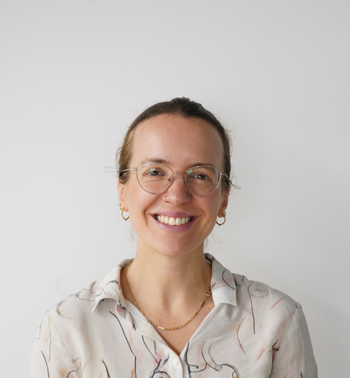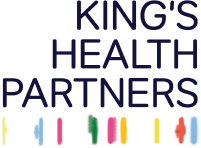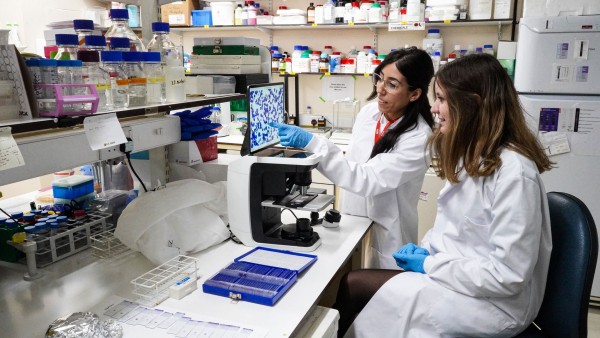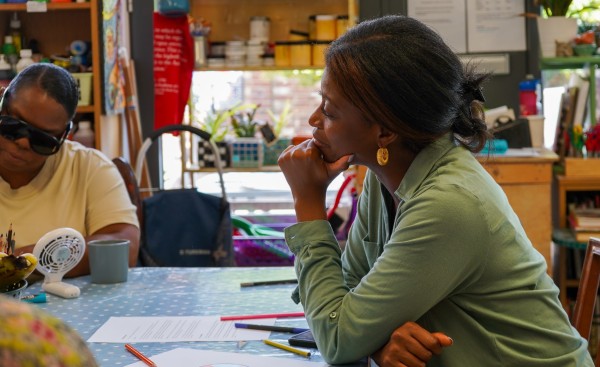9 July 2025
Dr Beth Jones, clinical lead for the Women’s and Girls’ Health Programme, shares her reflections on improving access to care in south east London - from lessons learned at the Southwark Long-acting Reversible Contraception (LARC) hub, to tackling inequalities and improving education and training.
Can you tell us a bit about your background?
I did my GP training at Guy’s and St Thomas’ NHS Foundation Trust and have always worked in Southwark; I love its diversity, history and culture, and the opportunities we have for innovating in healthcare to keep up with our population’s changing needs.
I’ve always had a passion for women’s and girls’ health and have grasped every opportunity to make it a core part of my career.
What has been your experience working on the LARC hub?
I think our LARC hub really proves that ‘if you build it, they will come’. We’ve been running for a year and have a huge amount of demand for our service. Given that a third of Southwark’s population are women of reproductive age, the demand isn’t surprising – but there’s a common myth that need is already being met by sexual health clinics. There are lots of reasons why many people prefer to get contraception from their GPs.
Developing the hub has also shown me how quickly ideas can progress if they’re powered by a motivated team. I’ve noticed how communicating with doctors who run the clinics and encouraging everyone to suggest improvements builds a sense of camaraderie over the project. We’re also very lucky that our primary care network is willing to invest in women’s and girls’ health.
Could you share some insights about the challenges of working in women's and girls’ health?
One major challenge is fragmented funding for women and girl’s health; for example, local authorities fund contraception but may not fund coils inserted for non-contraceptive reasons, and activities like pessary fitting are locally commissioned so many GPs are not paid to provide them. This means that providing joined-up care in the community can be difficult, and waiting lists for gynaecology are amongst the longest for any specialty. That’s why we’re hoping to create a more holistic experience through women’s and girls’ health hubs.
The second challenge is health inequalities. Women living in areas of higher deprivation are less likely to be prescribed hormone replacement therapy for their menopausal symptoms, and often wait the longest for gynaecological treatment. They’re also more than twice as likely to have abortions than those living in less deprived areas, which can indicate an unmet need for contraception. We must find ways to direct resources to the women who need them most.
Nonetheless, women’s and girls’ health can be incredibly rewarding. Patients are grateful to be able to access contraception in an environment where they feel comfortable and listened to, or to have a genuinely useful conversation about their fertility or menopause.
As the new clinical lead for the programme, what are your priorities for education, training, and development?
I really believe that education, training and development are key to providing high quality, accessible healthcare and reducing inequalities for women and girls. Even without a health hub, this could help us to provide better community care, delivered by GPs, pharmacists and others, without the need to wait a long time to see a gynaecologist. A recent government report also highlighted just how important education and training is in improving women’s health outcomes.
My priorities are to make sure we can reach as many diverse groups as possible, with training adapted to their role and needs. I want to equip clinicians to manage women’s health concerns without needing to make a referral. I also want to ensure that the programme reflects the findings of our health needs assessment, and that patients’ voices are represented in its development.
How do you envision the future of women's and girls’ health services in south east London?
I think we can reduce inequalities and improve outcomes across the board. Women should be able to access the contraception they want, ideally from their GP, and know how to plan for a pregnancy when they want to. No one should be waiting on a gynaecology waiting list when there might be treatments available to them in primary care. That’s why we’ve launched health hubs to make it easier for women and girls to access the care they need in one convenient place, providing advice for a range of conditions in a single visit.





